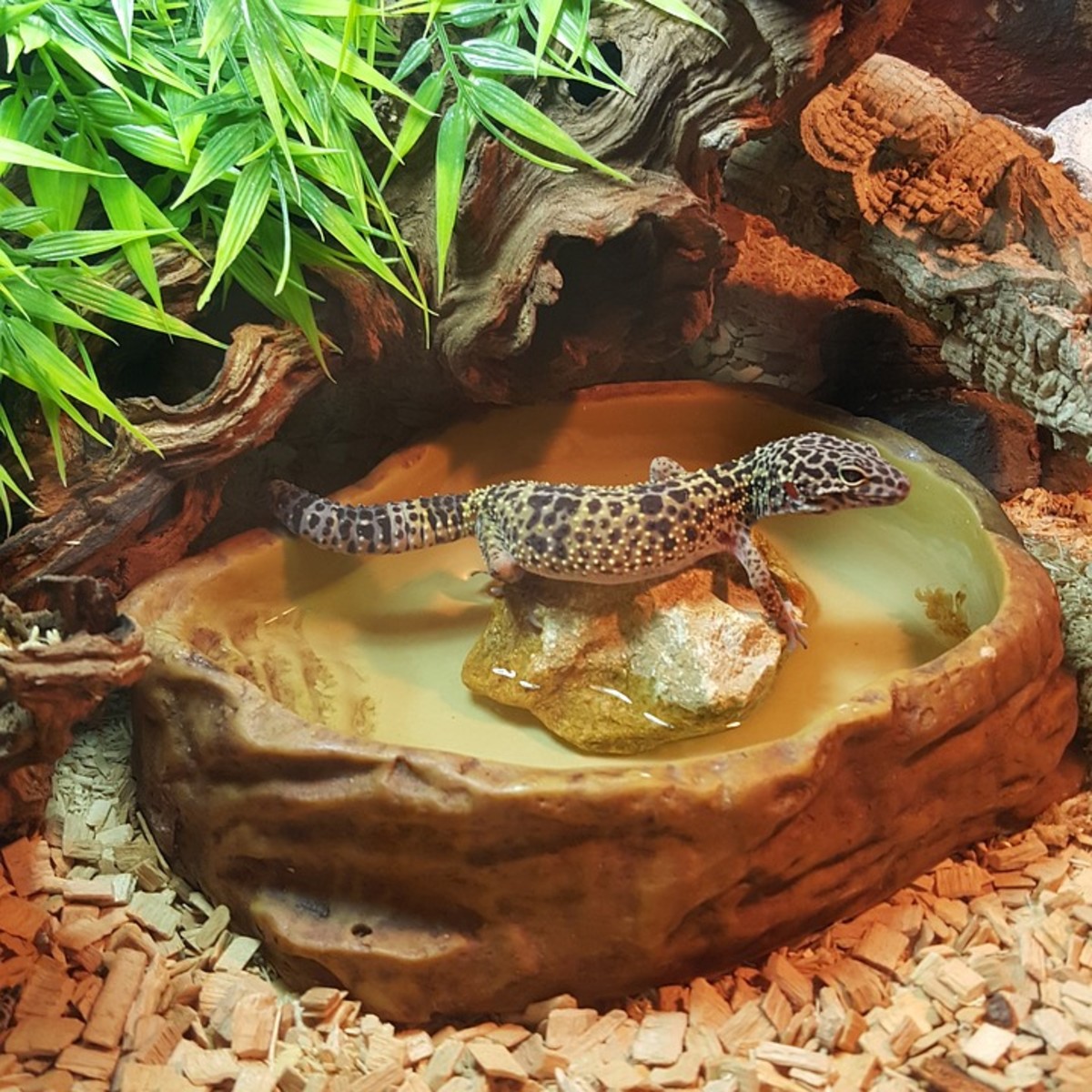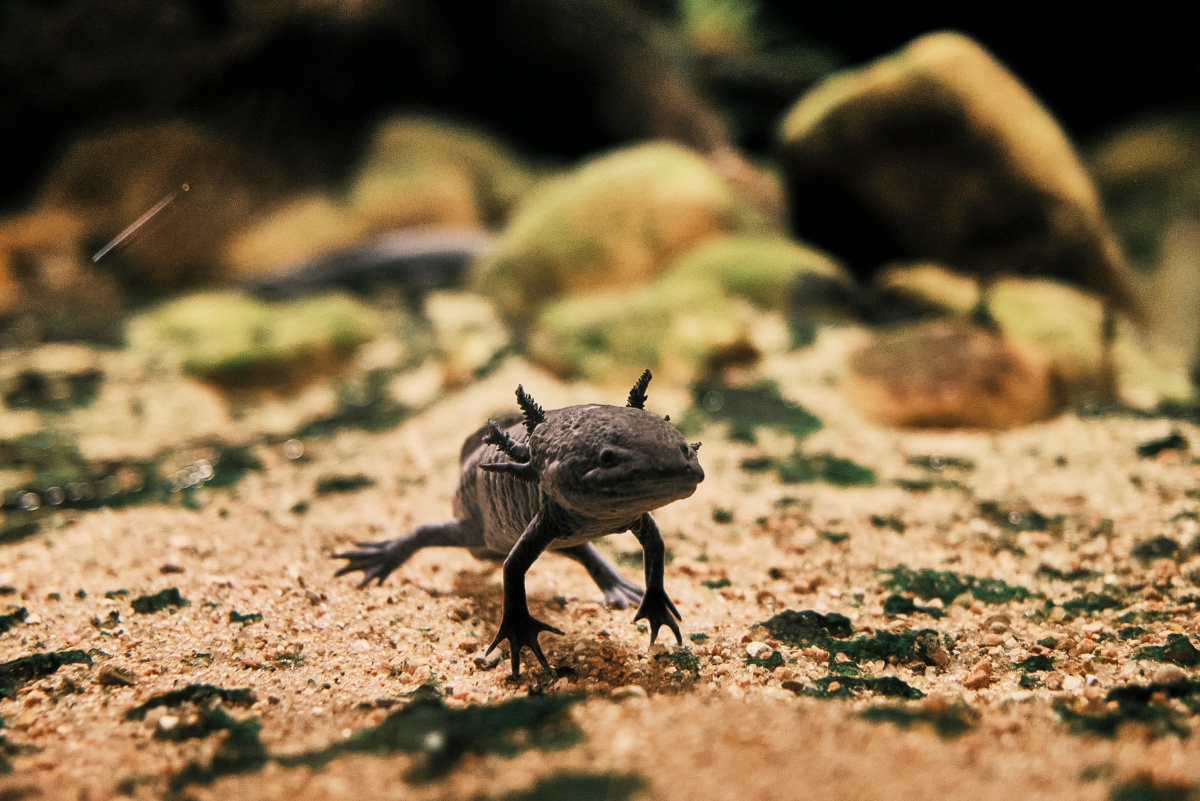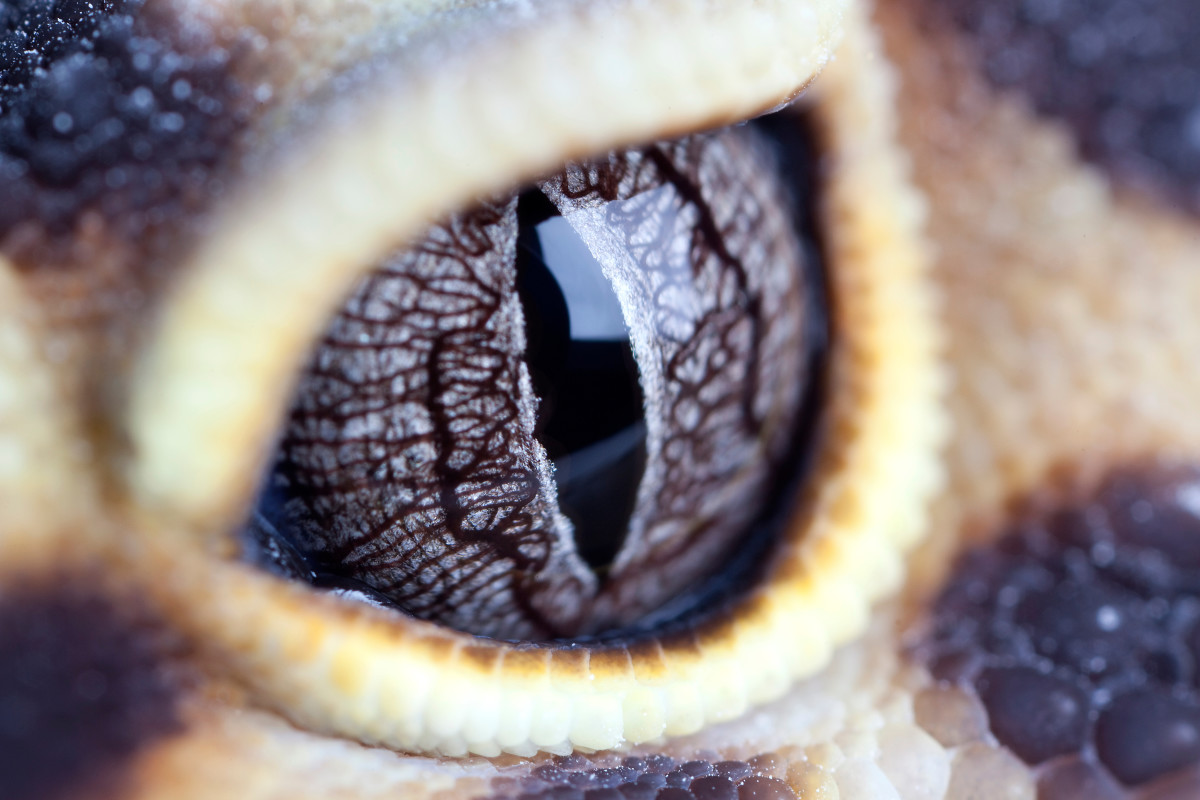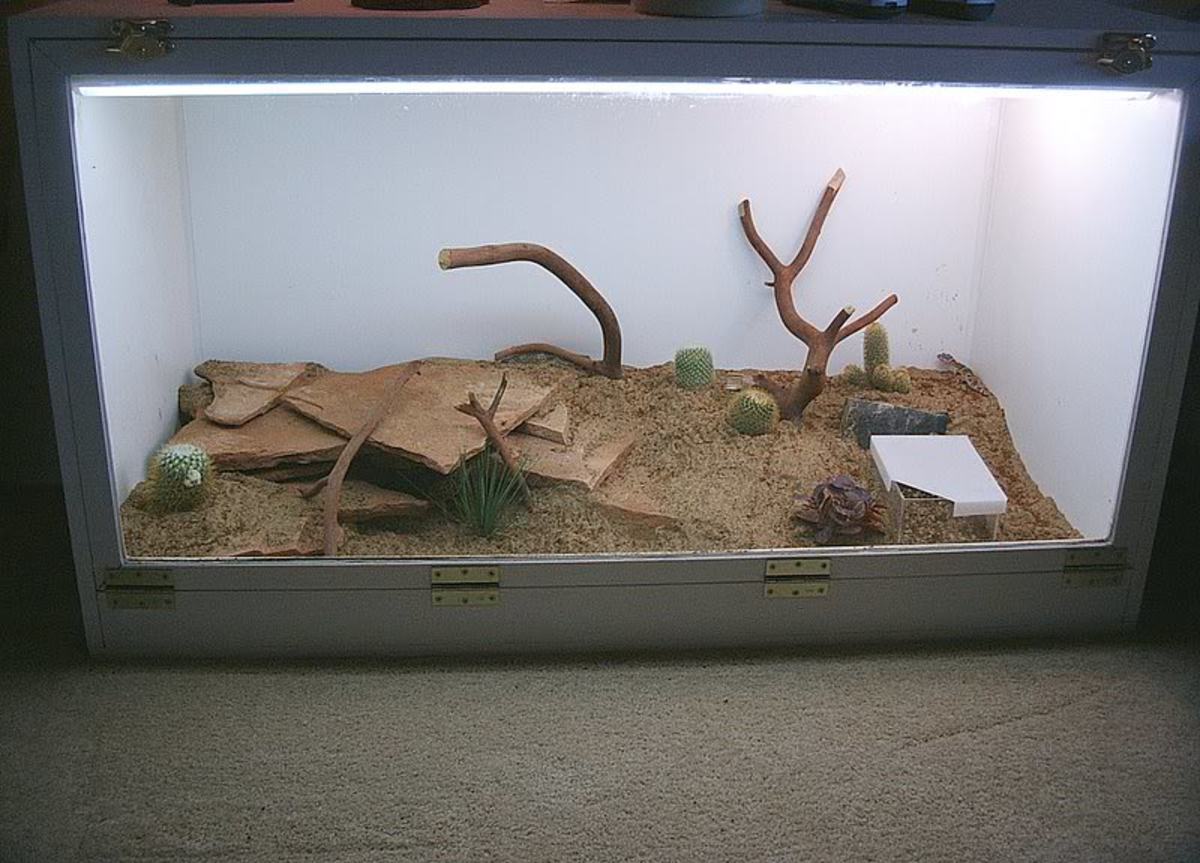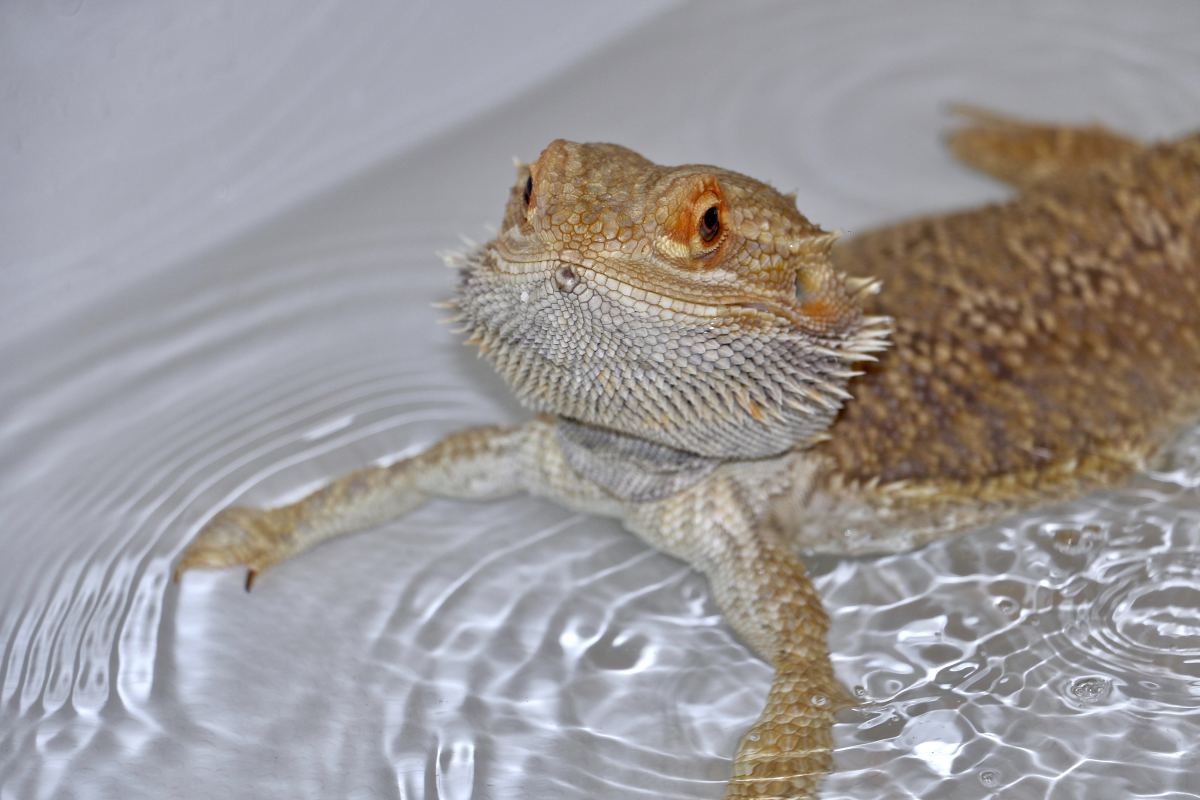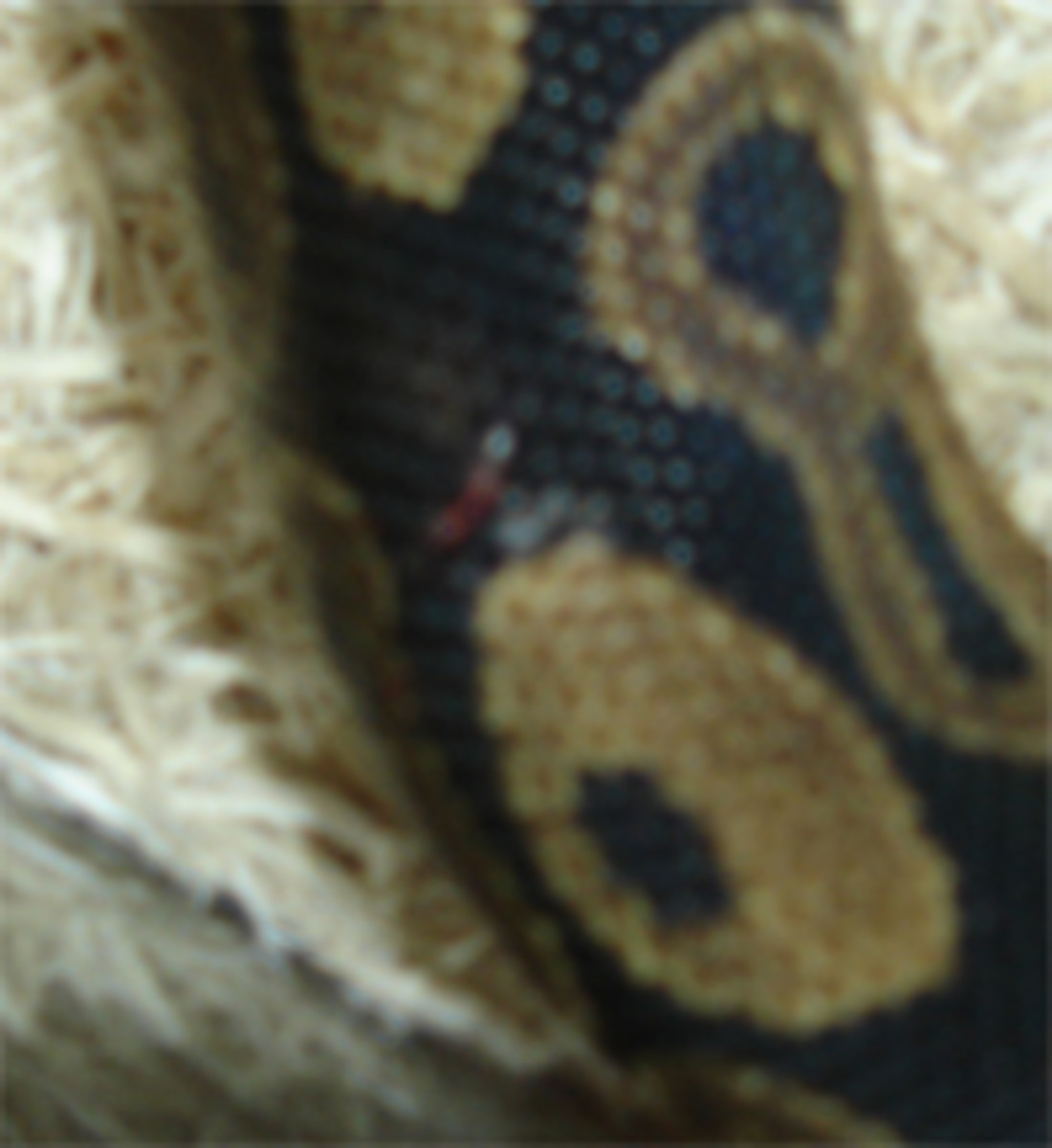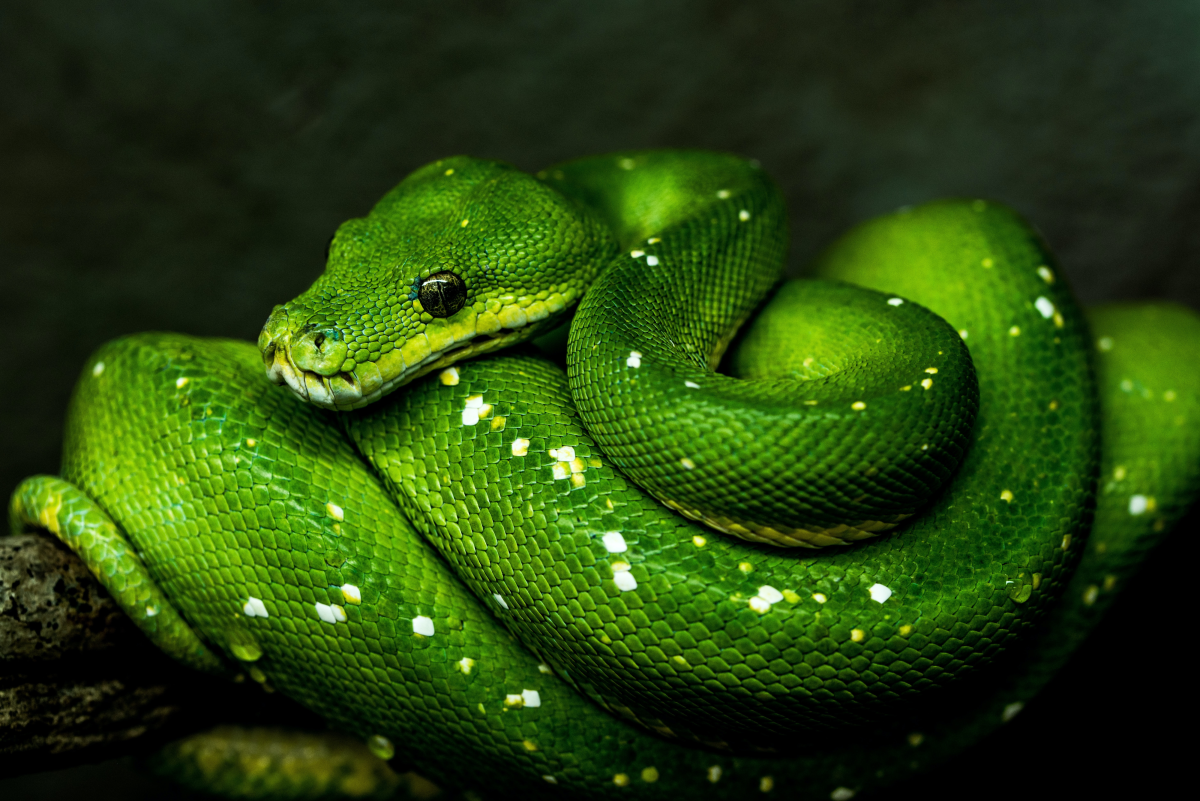Lizards and Snakes as pets: care sheets, observations, photos, and videos.
Reptiles are, without question, some of the most fascinating animals on the planet. The species variations are incredible, and observing them in captivity can be extremely rewarding. Ranging from the mysterious Mata-mata turtle of South America, to the Frilled-dragon of Australia, there truly is a reptile for everyone.
This page will focus on reptiles that are readily available to hobbyists, including monitors, anoles, plated lizards, pythons, geckos, and their species-specific requirements. I'll also include several videos I've taken of my reptiles, as well as some interesting pictures and observations.
Reptiles for Sale, and herping information
- Reptiles for Sale
BackwaterReptiles.com has a huge selection of live reptiles for sale, including lizards, snakes, turtles, tortoises, frogs, toads, newts, and inverts.
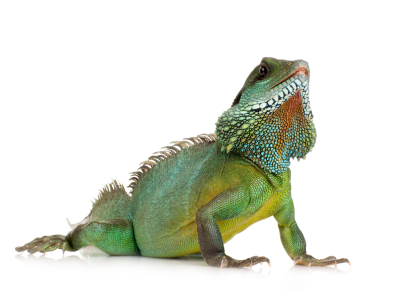
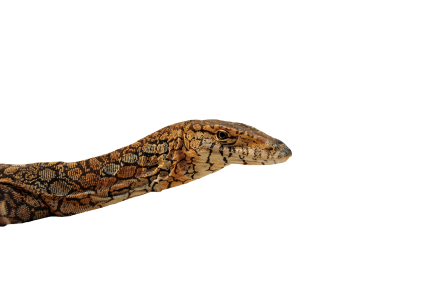
Monitor Lizards
Monitors literally come in all shapes and sizes--some are lengthy and slender, while others are shorter and stubbier. Some are fewer than 12-inches long, while others are over 6-feet in length. Diverse? Yes. Interesting captive reptiles? Absolutely.
As a result, you should definitely do your homework before purchasing a monitor lizard. The two most readily available species are also two of the most unsuitable for captivity: the Nile monitor (Varanus niloticus) which can reach sizes in excess of six feet, and the Savannah monitor (Varanus exanthematicus) which is a very heavy-bodied lizard reaching lengths of four feet. It goes without saying that very few people are truly prepared to care for a lizard of such dimensions.
Some of the smaller monitors can in fact make excellent captive lizards, including Ridge-tailed monitors (commonly called "Ackies" and reaching lengths of 20" to 35"), Black-headed monitors (these attain a size of 25" to 35"), and the Storr's monitor (rarely longer than 14").
The more common monitor species to avoid due to their truly massive size include the Water (V. salvatori), Nile (V. niloticus), Savannah (V. exanthematicus), Black-throat (V. albigularis), and Crocodile (V. salvadorii). As hatchlings, they may look manageable, but avoid the temptation to purchase these often inexpensive lizards unless you have an extremely large cage of appropriate dimensions, as well as the devotion to provide them with proper husbandry and plenty of food.
The smaller monitors mentioned a couple paragraphs above are much more suitable as reptile pets, and can actually become very entertaining and engaging. Provide them with a deep substrate (dirt, or a sand/coco mix), plenty of hiding places (cork bark), a basking spot of 130F to 150F (use a halogen flood or two), a heavy water dish, and a thermal gradient (one side of the cage is around 75F, the other is warmer with the basking spots). Maintain a humidity level of 60% to 70% by keeping the substrate adequately watered and via misting the cage. Most hobbyists don't realize that if your lizard is soaking in the water dish, your cage is too dry (this is your lizard's attempt at re-hydrating), it isn't just relaxing.
Feed your young monitors crickets, small roaches, and pinkie mice. Once they are closer to adult size, you can switch to a diet comprised primarily of mice, with large roaches as a supplement (they love chasing roaches). Dust all food with a quality calcium additive such as Miner-all.
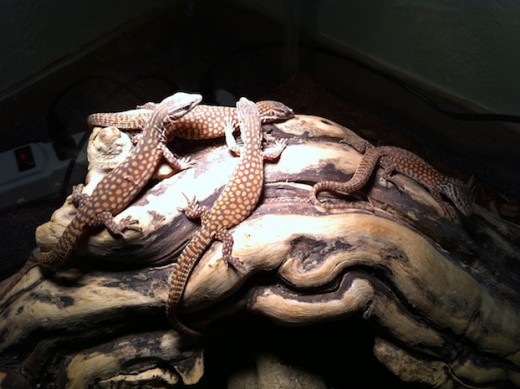
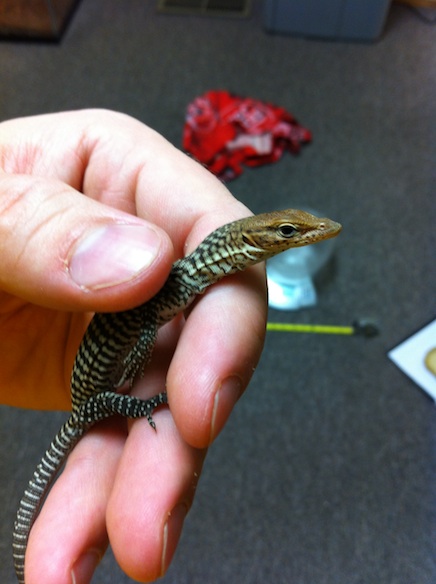
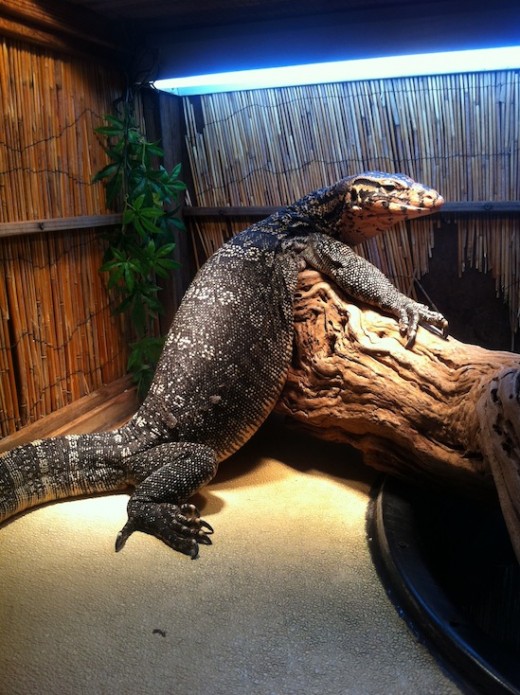
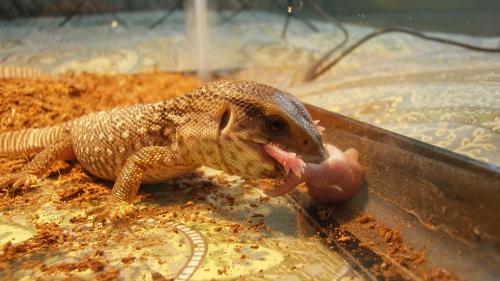
Sudan Plated Lizard (Gerrhosaurus major)
Sudan plated lizards (Gerrhosaurus major) are fairly common within the reptile trade, although perhaps not as much so with local pet shops. Hailing from central and southern Africa, these unique-looking lizards reach a modest size of 18" to 25".
One reason these lizards are popular is their reputation for being gentle non-biters. Many become very easy-going, and I've literally never heard of a bite attempt. Although somewhat rare, the most aggression seen is usually relegated to a tail-whip or more commonly just a quick bolt to cover. I had one of these lizards and it was the single most tame reptile I've ever owned.
Active during the day, give these lizards a large cage (approximately four feet in length, and three feet in width). What's important to remember is that plated lizards like to dig...a lot. Providing them with a deep substrate of dirt or sand will allow them to create burrows, which they will do often. As is the case for most lizards, provide a thermal gradient within the cage (one side is the basking area, the other is cooler). Create a basking spot that will reach temperatures of around 130F using a halogen flood (not a spot).
Sudan plated lizards are omnivores, meaning they eat insects and plant material in the wild. In captivity, feed them crickets and roaches (Blaptica dubia work great), supplemented with mice and vegetables (collard greens, bok choy).
Most are wild-caught, as captive-bred individuals are extremely rare. Fortunately, they are fairly resilient reptiles, and with proper husbandry, can live for many years (10+).
Be careful, because their tails can be dropped (come off), although they will regenerate after many months.
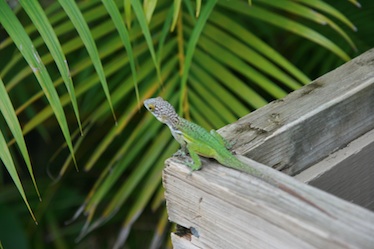
Leach's Anole (Anlois leachii)
This care sheet pertains to Leach's anoles, but applies to virtually all anoles (Brown, Green, etc). I found several of these attractively colored, and good sized, anoles on the island of Antigua when I was there on my honeymoon. They are tropical lizards that enjoy sun and humidity.
I saw Leach's anoles that were nearly 10" long on Antigua, so they reach an impressive size for an anole. They're also not quite as skittish as Brown or Green anoles. We had a large one that would sleep on the bathroom window of our villa each night. They are magnificently colored, with bright greens and defined blues, peppered with white and brown mottling.
These insectivorous anoles (and most anoles) relish appropriately sized crickets, mealworms, waxworms, and smaller superworms. Forget about the myth that mealworms or superworms can eat their way out of your anole's stomach--it's not true, so don't worry. Dust their food items with a calcium supplement such as Miner-all.
A 20-gallon tank is of sufficient size to provide an anole with necessary space. Using some dirt as substrate will help hold moisture and thus humidity levels. Cover the dirt with some leaf litter or sphagnum moss to help retain the moisture. Anoles are not diggers, so don't worry about a deep substrate. Using a UVB light is advisable, if not a bit controversial (some argue that available UVB lamps are not strong enough to provide meaningful UVB rays, while some say they are completely unnecessary). I use them for my anoles, not for my monitors (different diets). Add a water dish, some driftwood for climbing and basking, and keep the cage misted. Hygrometers are useful for monitoring the humidity level (try to keep it at 70%-80%, which is a lot easier said than done). Keep a basking spot at about 130F with a halogen flood lamp.
Anoles are not the type of lizards you handle. They do not tolerate it very well, so just avoid it. Plus, they're extremely quick, and can climb up walls, so it's tough if they get away from you (I learned this the hard way many times as a kid). If given proper husbandry, anoles can live for years in captivity.
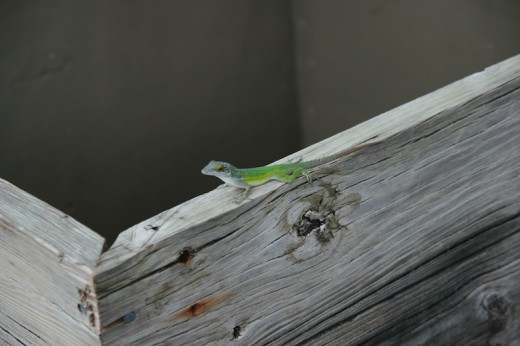
Leopard Gecko (Eublepharis macularius)
Leopard geckos are perhaps the most popular lizards within the reptile trade. The number of morphs (selective breeding for different colors and patterns) are literally countless. Along these lines, prices vary greatly as well. If you want a pure (natural) Leopard gecko, you can find them for $20. The exotic-looking morphs, on the flip-side of the coin, can be hundreds of dollars.
Another medium-sized lizard, Leopard geckos reach sizes of 8.5" to 11". While this doesn't sound overly large, a full-sized adult gecko can feel substantial when held (they store fat in their tails, so this adds to their volume).
These geckos are found in Pakistan, Northern India, and surrounding areas (parts of Iran and Afghanistan). Temperatures in these countries tend to be high during the day (90F+), and cool at night (50F). Since these geckos are nocturnal, they experience cooler temperatures while foraging (at night). This means you don't need to provide a basking spot as you would with diurnal (active during the daytime) lizards. You should, however, add a heat mat underneath one side (maybe 40%) of the cage so that the gecko has a place where it can warm itself (this aids in digestion).
A leopard gecko does not require a large cage, but will appreciate as much space as you can reasonably provide. A space three feet by two feet would be ideal. The substrate can be dirt, sand, or a combination. Some people even use paper towels, but I think that's lazy. If you're going to raise a Leopard gecko, give it what it prefers, not what makes life easier for you. Natural dirt has positive biological effects on waste as well. If you use sand, read my blurb on what types are suitable for reptiles (below).
Make sure you provide a couple hid spots, such as a half-buried cork bark tube, or flat cork bark on the surface. Make sure it's a snug fit for the lizard, and adjust it as the lizard grows. Provide a simple water dish, and some simple lighting if you wish to observe the lizard more clearly during the day (but this isn't necessary). Leopard geckos are nocturnal, as I mentioned, but they will move about during the day in captivity. Try to keep the humidity level around 60% to 70% (this will aid in shedding and will slow dehydration). Side note: Leopard geckos will eat their shed skin.
Generally considered extremely gentle, Leopard geckos rarely bite. I would even say the best part is that they are fairly slow, so they aren't able to dart off like an anole or fence lizard. Be careful when handling them, as it can stress them out, and they are able to drop their tail (detach it). It will grow back, but will never look as good as the original.
They mature at about nine months of age, and can begin breeding at that time. They can be prolific egg layers, but their clutches are usually just two eggs (although they can lay several clutches each year).
My Leopard geckos always have strong appetites, and your's will too if you provide it with the environment outlined above (especially the heat pad). When I was younger, I had a large one that really liked minnows, although the reptile hobby has since learned that fish are not a good staple food (they reduce niacin in the reptile, and can carry parasites). These geckos will devour crickets, small roaches, mealworms, waxworms, and pretty much anything small that moves (including smaller lizards, so be careful). As is recommended for most reptiles, dust food with a quality calcium supplement such as Miner-all.
Another nice habit Leopard geckos tend to adhere to is relieving themselves in the same spot in the cage each time. This makes cage maintenance much easier than having to spot clean.
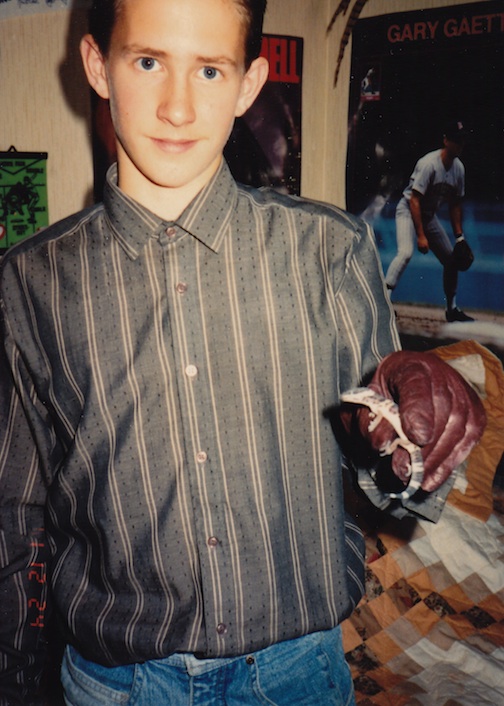
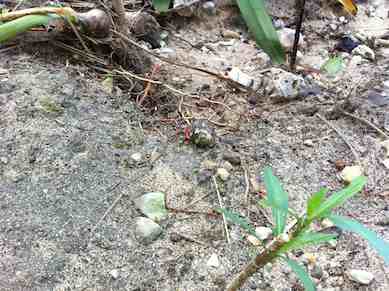
Substrate Information
When choosing sand as a substrate, try to mix it with something that holds moisture such as coco husk, at a ratio of 3:1 or thereabouts. Keep in mind, it's important to choose the right kind of sand. Do not purchase manufactured sand, as it is jagged and harmful to reptiles. Make sure you buy natural sand. The easiest method for determining if it's natural or not (other than the label), is to look at the size of the sand granules. Manufactured sand contains granules that are all approximately the same size, while natural sand is comprised of different sized granules.
Avoid decomposed granite as a substrate for your reptiles as it contains measurable amounts of asbestos (as does vermiculite).
Don't worry about impaction. If you're providing your reptiles with adequate heat and humidity, ingesting some sand will do no harm. In nature, reptiles ingest dirt and sand with virtually every meal, and it does not harm them.
Children's Python (Antaresia childreni)
It's often mistakenly assumed that these snakes are named because they are small and docile, but in fact they are named after John G. Children, a noted British herpetologist.
The second smallest python in the world (after the Anthill python), this beauty of a snake hails from Australia where, believe it or not, is known to hang from cave ceilings and catch small flying bats in mid-air. Amazing! They reach an adult size of approximately three feet, although larger specimens do exist.
As hatchlings, they will begin feeding on small pinkie mice, although initially there are times when the pinkies must be scented with a lizard (such as a House gecko). In my experience, this hasn't been necessary. As they grow, there is no need to feed them anything but thawed mice. It's somewhat subjective, but I recommend feeding them once to twice per week.
Cage-wise, you can simply use a 20-gallon tank, or even a large plastic bin with similar floor space. Aspen shavings can be used as substrate (replace it each month). Include a small, heavy water dish (keep the water fresh), as well as a tight hiding spot. Under about 30% to 40% of the cage, attach a heat mat so that the surface will reach 90F to 100F (the snake will utilize this area for digestion).
Other than that, they're very undemanding snakes, and can actually be kept as individuals or pairs (even trios). They can begin breeding by age 2 1/2 to 3 years of age.
Children's pythons are known for their docile nature and smaller size, although as hatchlings, they like to strike. You can see a video I took of my female striking here. Keep in mind, my female is the less aggressive one in my pair! Don't worry--as they age, they become more and more gentle. It's said that they can reach ages of 25+ years with good care.
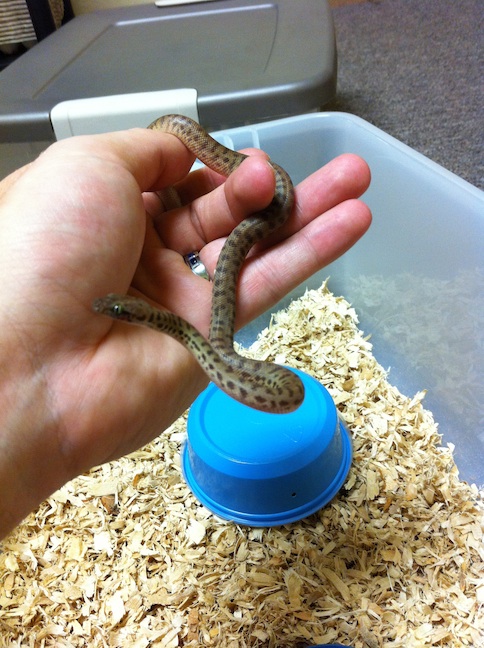
My female Children's python eating a pinkie
Gopher Snake I caught on the road
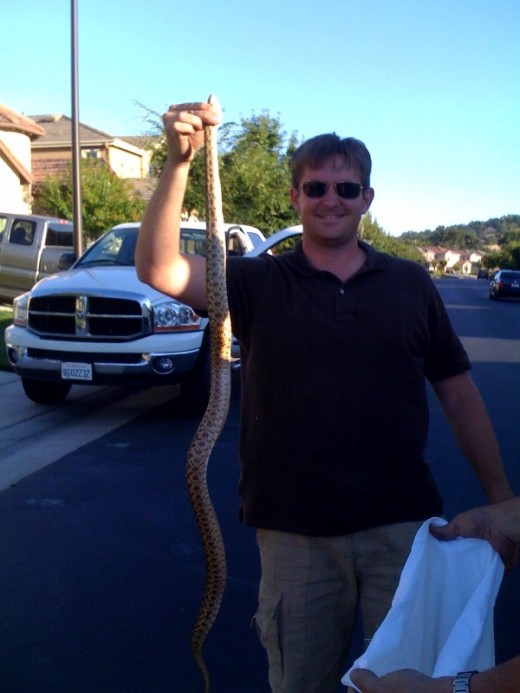
Buy this book

Highly recommended

The Best Reptile Supplement
Miner-all is the absolute best calcium and D3 supplement available. It's pure--no artificial additives or contaminates. I've used Miner-all for years after having gone through many others, and I've had the most success using it.
There are two versions--indoor and outdoor. The indoor Miner-all is used for reptiles being kept inside, and thus have no access to natural unfiltered sunlight. Miner-all outdoors is for reptiles that have regular access to natural sunlight (thus there is no vitamin D3 added). I highly recommend you dust all of your reptile food items with Miner-all.
Reptiles Magazine
If you're a fan of reptiles, you really should have a subscription to Reptiles Magazine (link below). It's cheap, it's a quick read, and it's got broad appeal. What I like best are the cover stories, which are articles written by contributing experts (and by "expert," I mean someone who has actually accomplished something within the reptile or amphibian hobby) from around the world.
Looking for a rhino iguana? The classifieds will have what you want. Looking for a supplier of feeder mice, quail, roaches, or crickets? That's also covered. Photo buff? There are tons of stunning reptile and amphibian pictures throughout each issue.
The Vivarium was the first herpetoculturist magazine on the market well over a decade ago, but they ceased production long ago. Reptiles magazine fits the bill and I highly recommend it.
What is your favorite type of reptile?
Test your reptile and amphibian knowledge by taking this quiz:
view quiz statisticsCheck out one of my other reptile-related Hubpages
- Reptile Book Reviews
Reptile and amphibian books vary greatly in quality, with most being subpar. Many are written by well-meaning reptile hobbyists or academics (or even large corporations), but in the end, lead you down the...

